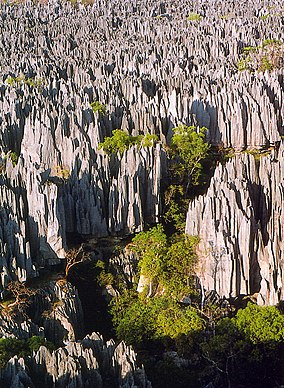| Bemaraha National Park | |
|---|---|
 | |
| Location | Melaky, Madagascar |
| Coordinates | 18°40′00″S44°45′00″E / 18.6667°S 44.75°E |
| Area | 723.4 km2 (279.3 sq mi) |
| Designation | National park |
| Established | 1 August 1997 |
| Visitors | 10,093(in 2011) [1] |
| Governing body | Madagascar National Parks |
| Website | https://www.parcs-madagascar.com/parcs/bemaraha.php |
The Tsingy de Bemaraha National Park is a national park located in northwest Madagascar. It is mainly within the boundaries of Antsalova District, with a small part in the northeast falling within Morafenobe District. The national park centers on two geological formations: the Great Tsingy and the Little Tsingy. Together with the adjacent Tsingy de Bemaraha Strict Nature Reserve, the National Park is a UNESCO World Heritage Site. [2] [3]
Contents
It is crossed by the Manambolo River.


